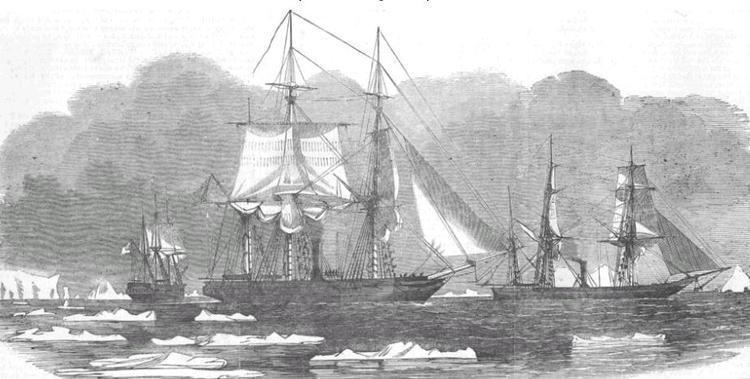Name Conflict class Succeeded by HMS Plumper | Preceded by HMS Niger Built 1845—1849 | |
 | ||
The Conflict-class sloop was a class of two first-class wooden screw sloops built for the Royal Navy in the mid 1840s. Two other ships were ordered but cancelled shortly afterwards. Both completed ships served in the Baltic during the Crimean war, and Desperate briefly served as a store ship to Edward Augustus Inglefield's Arctic expedition. They had both been broken up by 1865.
Contents
Design
Orders for two first-class steam vessels (Conflict and Desperate) were placed with Pembroke Dockyard on 5 February 1845. A further pair (Enchantress and Falcon) were ordered on 26 March 1846, but were suspended in September the same year. The vessels were re-rated as first-class sloops in April 1845. They were designed by the Surveyor's department and approved by the Surveyor of the Navy, Sir William Symonds on 9 May 1845. The suspended ships were finally cancelled in April 1851.
The completed ships were fitted with a 4-cylinder horizontal single-expansion steam engine driving a single screw. The engines were provided by Seaward and Capel (Conflict) and Maudslay, Sons & Field (Desperate). The engine was rated at 400 nominal horsepower and on trials in Conflict developed 772 indicated horsepower (576 kW). The armament consisted of two 56-pounder (85cwt) guns, six 8-inch (65cwt) muzzle-loading shell guns and two 32-pounder (25cwt) guns. In 1857 the armament was changed to a single 68-pounder (95cwt) smoothbore muzzle-loading gun and a 10-inch (85cwt) gun, while retaining the six 8-inch (65cwt) muzzle-loading shell guns.
Construction
The ships were built at Pembroke Dockyard. All four ships had their keels laid in 1845 and 1846, and Conflict was launched on 5 August 1846. Her stern was altered in early at Wigrams, in Blackwall in 1848, increasing her length by about 8 feet (2.4 m), and Desperate was altered on the stocks the same year, delaying her launch until 23 May 1849.
Conflict
Conflict was commissioned at Plymouth for the first time on 20 November 1849 served her first commission on the south-east coast of America. She recommissioned at Plymouth in 1854 and served in the Baltic during the Crimean War. Her commanding officer, Captain John Foote, was drowned off Memel (now Klaipėda in Lithuania) on 9 May 1854. Captain Arthur Cumming was appointed in command, and saw considerable active service. On one occasion he took Conflict and Amphion (Captain Astley Cooper Key) into Libau (modern Liepāja in Latvia), occupied the town and seized eight Russian merchant vessels, without firing a single shot. She was commanded by Commander William Charles Chamberlain at Devonport in 1855 and by Commander Cochran in the Mediterranean in 1856—7. She recommissioned in August 1857 and served on the west coast of Africa.
Desperate
Desperate was commissioned at Plymouth for the first time on 9 May 1853. She accompanied Phoenix as far as Cape Farewell, Greenland for Edward Augustus Inglefield's Arctic expedition bringing supplies to Edward Belcher's search for Franklin's lost expedition. She saw service in the Baltic during the Crimean War, and served in the Mediterranean until 1860. She was commissioned at Plymouth in 1862 and served off Mexico, occupying Vera Cruz, after the Mexicans had postponed the payment of indemnities to Britons who had suffered in recent revolutions. She was commanded by Commander Arthur Thomas Thrupp on the North America and West Indies station from 1862 to 1863.
